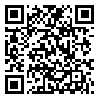Mon, Dec 15, 2025
[Archive]
Volume 32, Issue 1 (2022)
IJAUP 2022, 32(1) |
Back to browse issues page
Download citation:
BibTeX | RIS | EndNote | Medlars | ProCite | Reference Manager | RefWorks
Send citation to:



BibTeX | RIS | EndNote | Medlars | ProCite | Reference Manager | RefWorks
Send citation to:
Nilipour M, Medghalchi L, Mirgholami M. Intangible Cultural Resources of Urban Parks, The Case of Fateh Garden, Karaj, Iran. IJAUP 2022; 32 (1)
URL: http://ijaup.iust.ac.ir/article-1-652-en.html
URL: http://ijaup.iust.ac.ir/article-1-652-en.html
1- Faculty of Architecture and Urbanism, Tabriz Islamic Art University, Tabriz, Iran
2- Faculty of Architecture and Urbanism, Tabriz Islamic Art University, Tabriz, Iran ,l.medghalchi@tabriziau.ac.ir
2- Faculty of Architecture and Urbanism, Tabriz Islamic Art University, Tabriz, Iran ,
Abstract:
In recent years, several studies have focused on the perceived meanings of urban parks. However, few studies are to be found providing a comprehensive model of the meanings and associations of an urban park. This paper seeks to address the main following question: What are the meanings and associations of Fateh Garden for its users?
In this study, a grounded theory approach was conducted to identify meanings and associations as intangible cultural resources of Fateh Garden which is one of the largest and most popular parks in Karaj. In this regard, sixty-nine semi-structured interviews were conducted with Fateh Garden’s users. The results reveal that when users are asked about the park, they often come up with pleasant meanings and associations. Components, events, and activities as causal conditions create pleasant meanings and associations for the users of Fateh Garden. Moreover, ease of accessibility facilitates the use of this park. However, there are some issues, problems, and contradictions related to Fateh Garden that need to be addressed. In this regard, identifying problems and providing solutions can lead to promoting peace, safety, and hope for Fateh Garden’s users. This study identifies eight categories and sixteen subcategories. The substantive theory that emerged, was named promoting peace, safety, and hope through pleasant meanings and associations. This study provides a framework for urban parks managers and future researchers to assess intangible cultural resources of urban parks.
In this study, a grounded theory approach was conducted to identify meanings and associations as intangible cultural resources of Fateh Garden which is one of the largest and most popular parks in Karaj. In this regard, sixty-nine semi-structured interviews were conducted with Fateh Garden’s users. The results reveal that when users are asked about the park, they often come up with pleasant meanings and associations. Components, events, and activities as causal conditions create pleasant meanings and associations for the users of Fateh Garden. Moreover, ease of accessibility facilitates the use of this park. However, there are some issues, problems, and contradictions related to Fateh Garden that need to be addressed. In this regard, identifying problems and providing solutions can lead to promoting peace, safety, and hope for Fateh Garden’s users. This study identifies eight categories and sixteen subcategories. The substantive theory that emerged, was named promoting peace, safety, and hope through pleasant meanings and associations. This study provides a framework for urban parks managers and future researchers to assess intangible cultural resources of urban parks.
Type of Study: Research Paper |
Subject:
Urban Planning
| Rights and permissions | |
 | This work is licensed under a Creative Commons Attribution-NonCommercial 4.0 International License. |





